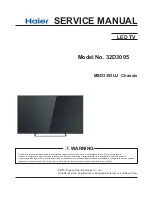
18
installation, there are some questions you'll need to ask yourself first. Once these are answered, you're
ready to begin your project:
Seating area
Is the system designed around a "sweet spot" or for the same sound everywhere? There are
different products for different designs.
What kind of seating do you want? Is the room primarily a home theater entertainment area, or will
music be part of what it's used for as well?
Aesthetics
What speaker sizes are you planning to use? Make sure the ones you choose don't overwhelm the
room.
Wire access
Have you planned how you will run wires to your speaker locations?
Speaker Breakdown - See our Speaker Selection »
Floor standing/Tower Speakers
These are the
largest speakers and the most common in dedicated home theater rooms. They consist of a larger
cabinet for the components and have different sized drivers inside. Some towers even come with
amplifiers built into the cabinet. This construction usually allows for the best sound, but they can be
imposing from a price and appearance standpoint.
Bookshelf Speakers
Quite a bit smaller than their
floor standing cousins, these speakers are designed to provide a happy medium between sound quality
and space efficiency. While bookshelf speakers will lose some of the performance of a larger speaker,
their size makes them a popular choice for many rooms.
Satellite Speakers
In areas where space is at
a premium, satellite speakers are a popular choice. These are small, usually plastic, and are often
included in many cost-effective "home theater in a box" packages. Their small size and cost
effectiveness make them an ideal choice for smaller rooms or a budget system, but their sound quality
often comes up short when compared to higher quality options.
Recessed Speakers
Some companies
offer a type of speaker that uses the wall or the ceiling as an enclosure. In other words, these
"recessed" speakers put the empty space in those areas to work for you. You will need to consider a
few things for this type of installation:
A suitable mounting depth
—
Most speakers need 3-6 inches of space behind the wall or
ceiling. If you go this route, make sure there aren't drain lines or wires blocking the way.
A sturdy mounting surface
—
For this, properly installed drywall will usually provide a stable
area.
Wire access
—
Some high quality wire can be as thick as your finger. How do you want it run?
Is the wire you will be using code compliant? (See "Running Wires" section for more
information.)
Soundproofing
—
Things may sound great in one room, but can be irritating to those in the
next room. Proper treatment will cut down unwanted noise, as well as help your sound quality.
A working knowledge of your house's construction
—
Before you begin installation, know what is
hidden before you cut or drill! This will help avoid any costly uses of the word "oops."
Needed ToolsSome tools used in the installation profession can cost hundreds of dollars. However,
these tools can save hours of work on a project and allow a skilled installer to learn about a house's
















































